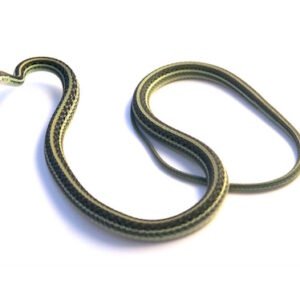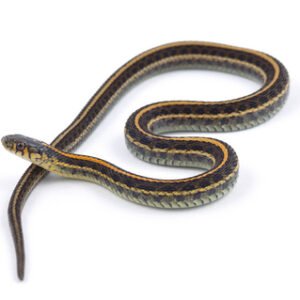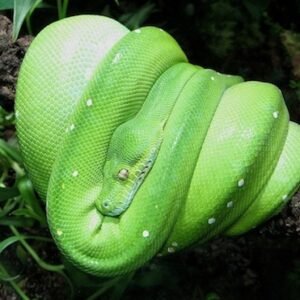Introduction to the Colombian Boa
The Colombian Boa, scientifically classified as Boa constrictor imperator, is a subspecies of the well-known boa constrictor. This species is native to the lush tropical environments of Colombia and other regions in Central and South America. Distinguished by its robust physique and fascinating behavioral traits, the Colombian Boa is a remarkable representative of the boa family, captivating both enthusiasts and researchers alike.
Typically, adult Colombian Boas can reach lengths ranging from six to ten feet, with some individuals even exceeding this range. Their considerable size and muscular build enable them to successfully navigate their environments as proficient constrictors. The coloration of these snakes is particularly noteworthy; they commonly exhibit a splendid array of patterns featuring rich browns, tans, and yellows. This ability to blend seamlessly into their surroundings, aided by their camouflaging coloration, is one of the unique adaptations that help them thrive in the rainforest and savanna habitats they inhabit.
In addition to their striking colors, Colombian Boas are characterized by their distinct saddle-like markings along their dorsal region, which further enhances their ability to remain unnoticed in the wild. Beyond their physical attributes, these snakes display remarkable behavioral features, including their preference for arboreal living; they are often found in trees, where they hunt for birds and small mammals. This preference for climbing reflects their adaptation to the diverse environments they occupy. Furthermore, they possess exceptional vision and heat-sensing capabilities that assist them in locating prey even in low-light conditions.
As one of the more docile members of the boa family, Colombian Boas have gained immense popularity among reptile enthusiasts. Their intriguing characteristics and manageable size make them an appealing choice for both novice and seasoned keepers. Understanding the unique traits and natural history of the Colombian Boa is essential for anyone interested in this captivating species.
Habitat and Distribution
The Colombian Boa, scientifically known as Boa constrictor, is primarily found in the lush tropical rainforests of Colombia and the surrounding regions. This captivating snake species thrives in environments characterized by high humidity and consistent temperatures, which are integral to their physiological needs. Colombian Boas are often spotted in diverse terrains, ranging from dense jungles to more open habitats such as savannas and swamps. Their adaptability allows them to occupy a variety of ecological niches, yet their preferred habitat generally includes ample cover and abundant prey.
Temperature and humidity are critical factors that shape the distribution of the Colombian Boa. These snakes favor areas where humidity levels are elevated, often found in climates that maintain moisture through rainfall or proximity to water sources. The availability of prey, including rodents, birds, and other small mammals, also significantly influences their habitat choice. Colombian Boas tend to inhabit regions with an abundance of their preferred food sources, which allows them to sustain their energy needs effectively.
Furthermore, habitat fragmentation and environmental changes pose threats to the Colombian Boa population. The destruction of their natural habitats due to deforestation and agricultural expansion has created challenges for their survival. As these snakes are integral to the ecosystems they inhabit, their decline may disrupt local biodiversity. Conservation efforts in their native regions are essential to protect the Colombian Boa and ensure the preservation of their habitats. Establishing protected areas, promoting sustainable land-use practices, and raising awareness about the importance of these snakes can contribute to their conservation, securing a future in harmony with their ecosystems.
Behavior and Diet
The Colombian Boa, scientifically known as Boa constrictor imperator, exhibits a variety of fascinating behavioral traits that contribute to its survival in the wild. As primarily nocturnal hunters, these snakes are well adapted to a lifestyle of hunting during the night, which allows them to avoid the heat of the day and the activity of potential predators. Their primary hunting technique involves ambush; they will often remain motionless and camouflaged among the foliage, waiting patiently for an unsuspecting prey to come within striking distance. Once a suitable target is identified, this snake employs its powerful muscular coils to constrict and subdue its catch, which typically includes rodents, birds, and other small mammals.
The dietary habits of the Colombian Boa reflect its opportunistic nature, as it adjusts its prey selection based on availability in the environment. This adaptability ensures a diverse diet that is not restricted to a single type of prey. Adult Colombian Boas tend to eat larger prey, which may require fewer meals over time. Feeding frequency can vary based on several factors, including the size of the prey and the snake’s age. Younger snakes typically feed more frequently for growth and development, while adults may feed every few weeks.
In addition to their predatory behavior, the social tendencies of the Colombian Boa lean towards solitude. These snakes are generally solitary creatures, preferring to establish their own territories and minimize interactions with others of their species. This territorial aspect is important, as it allows them to maintain control over their hunting grounds and reduces competition for food resources. Understanding the behavioral characteristics and diet of the Colombian Boa not only informs us about its ecological role but also enhances our appreciation for this remarkable snake species in its natural habitat.
Care and Maintenance in Captivity
Ensuring that a Colombian Boa thrives in captivity necessitates a comprehensive understanding of its care and maintenance requirements. First and foremost, the enclosure for this snake should be spacious enough to accommodate its size; adult Colombian Boas can reach lengths of up to 10 feet and require an enclosure that is at least 6 feet in length, 2 feet in width, and 2 feet in height. This space allows for essential behaviors such as climbing and hiding, which are vital for its mental well-being.
Temperature and humidity levels in the enclosure are critical to the health of a Colombian Boa. A temperature gradient should be established, with a warm end maintained between 85-90°F and a cooler end around 75-80°F. Using an appropriate heating source, such as an under-tank heater or ceramic heat emitter, will help achieve these conditions effectively. Additionally, humidity levels should be kept high, ideally between 50-70%, to facilitate proper shedding and prevent respiratory issues. This can be achieved through regular misting, a water bowl large enough for soaking, and using a suitable substrate that retains moisture, such as coconut fiber or aspen shavings.
When it comes to feeding, a Colombian Boa’s diet primarily consists of appropriately sized rodents like rats. Feeding should occur every 1-2 weeks, with the size of the prey corresponding to the snake’s girth. It is vital to ensure the prey is appropriately thawed when offered, as this prevents potential health issues. Regular health care considerations include monitoring for signs of mites, respiratory infections, and other ailments; routine vet check-ups can be valuable in maintaining its health.
Prospective owners should prioritize responsible management of their Colombian Boas. Understanding this species’ specific needs and behaviors fosters a fulfilling owner-pet relationship while enhancing the overall well-being of these remarkable reptiles.





